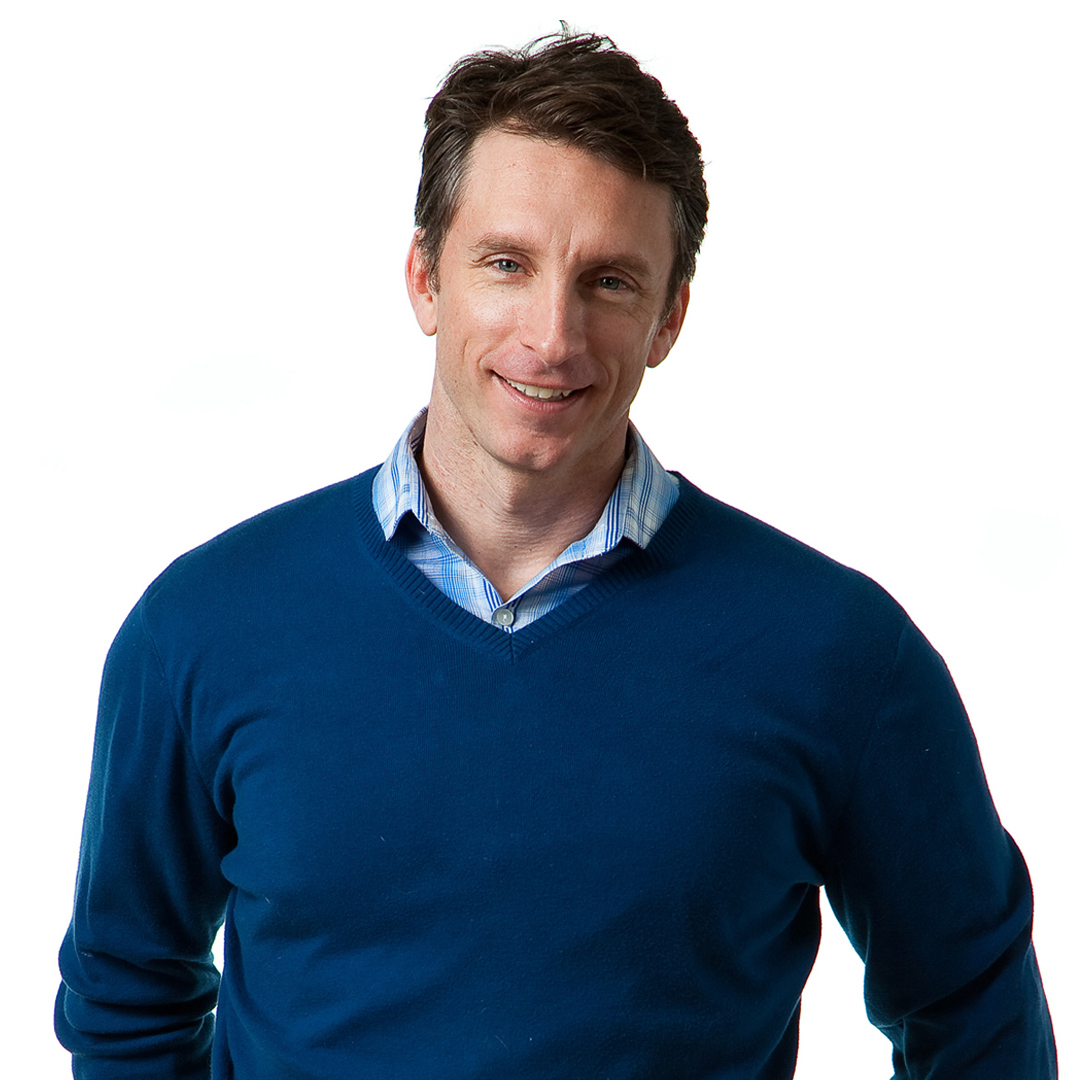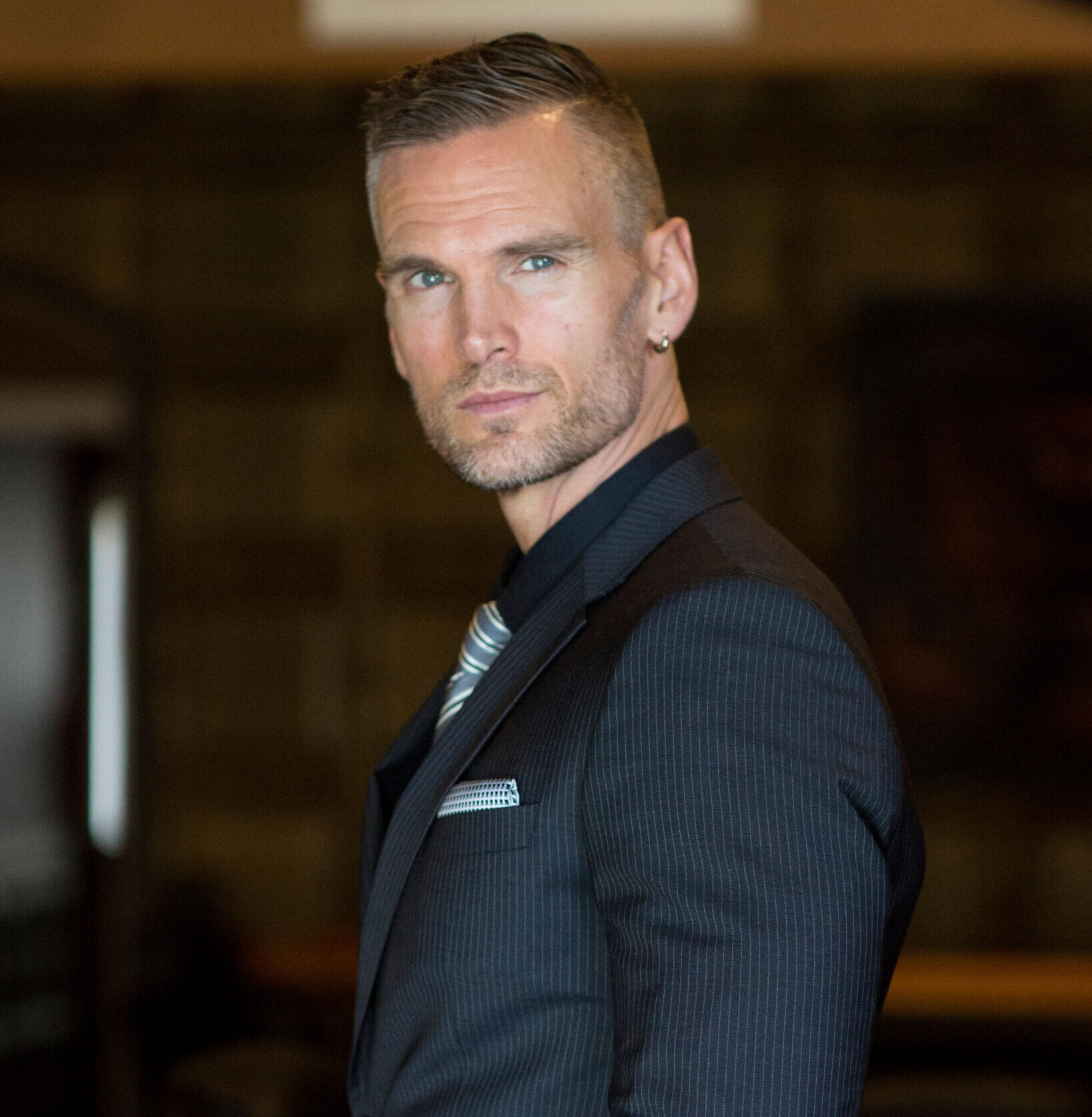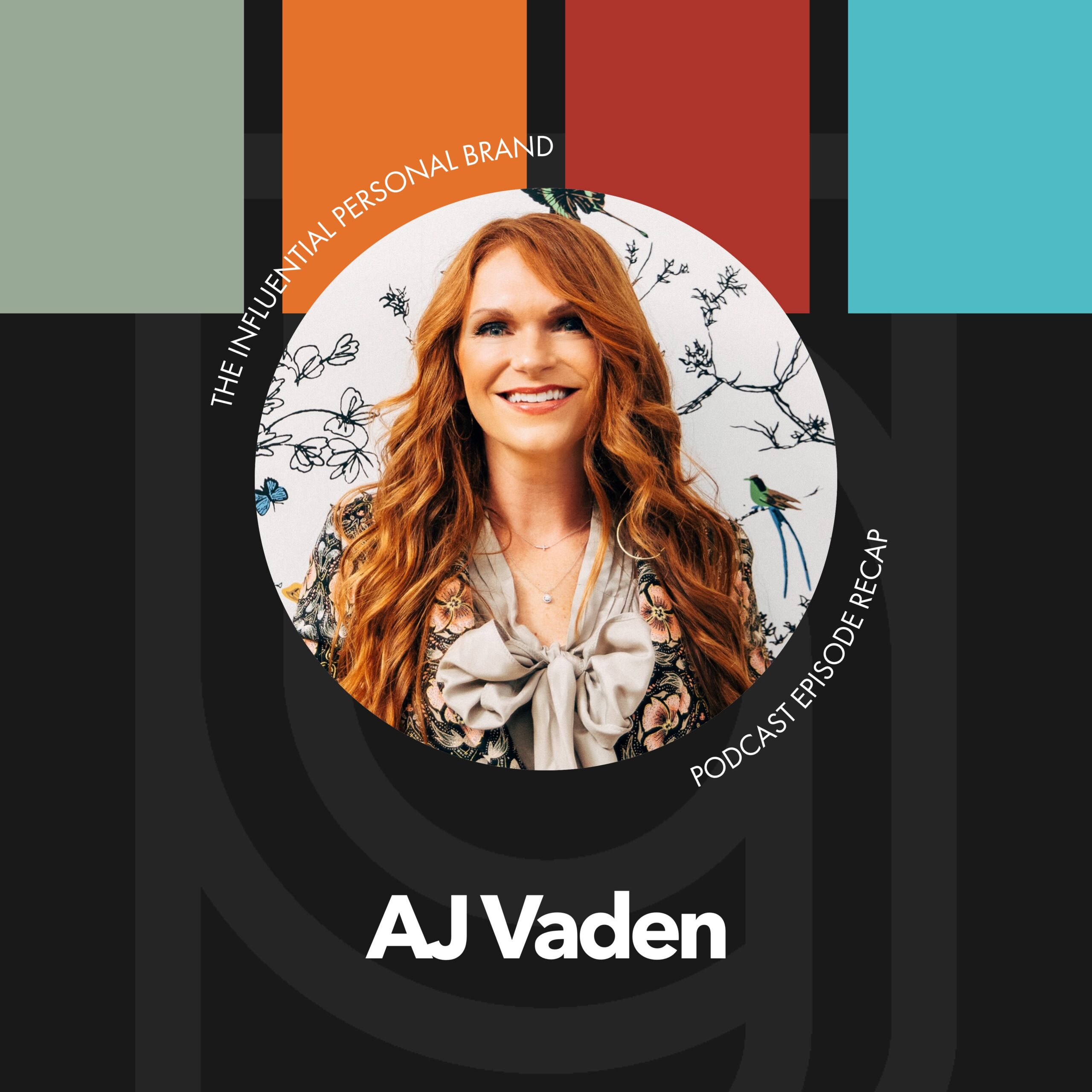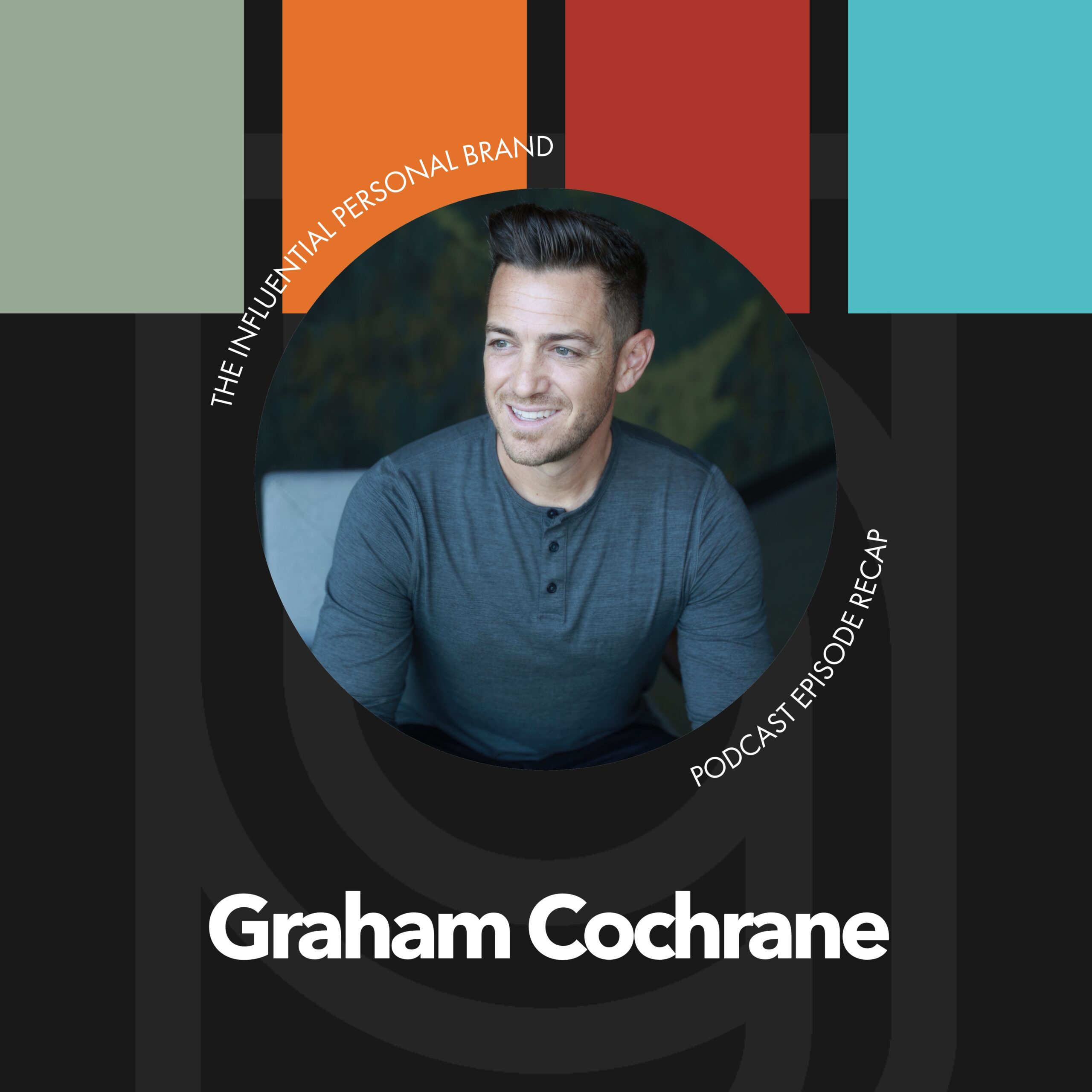RV (00:07):
[Inaudible] Hey, brand Builder, Rory Vaden here.
RV (00:10):
Thank you so much for taking the time to check out this interview as always, it’s our honor to provide it to you for free and wanted to let you know there’s no big sales pitch or anything coming at the end. However, if you are someone who is looking to build and monetize your personal brand, we would love to talk to you and get to know you a little bit and hear about some of your dreams and visions and share with you a little bit about what we’re up to see if we might be a fit. So if you’re interested in a free strategy call with someone from our team, we would love to hear from you. You can do that at brand builders, group.com/pod call brand builders, group.com/pod call. We hope to talk to you soon. Well, my man, Mike Michalowicz is one of my favorite thinkers on entrepreneurship.
RV (01:00):
I, you probably have heard of his book profit first. He’s the best selling author of that book has got thousands of reviews on Amazon is very popular among the entire entrepreneurship community. He also has written several other books, clockwork fix this next. And he’s got a new book coming out at September of 2021. It’s called get different, which is what we’re going to talk about. But by age 35, Mike had founded and sold two different companies wanting to private equity, another to fortune 500 he’s a former small business columnist for the wall street journal. He was a make-over specialist on MSNBC and he travels the world speaking to entrepreneurs. He’s he? He is a speaker he’s on stages. We’ve met each other, gotten to know each other a little bit over the years. And I just think he is one of the most influential thinkers and thought leaders in the space of entrepreneurship. So Mike Michalowicz welcome to the show, man. I was in
MM (01:57):
The house. Yeah.
RV (02:00):
So get different is it what’s this is, this is the newest, you’ve got a nice, you’ve got a nice building brand, like a very consistent just body of work that you have done, which I love. So what’s, what’s get different. Why, why the need for this book? Why now?
MM (02:22):
So it’s the why I want to do is boil down what the essence of effective marketing is. And the reason is most small businesses are highly ineffective at marketing. Actually that’s the whole reason your business exists is because so many people, we can’t do it on our own, but what’s interesting is you know, this is kind of pre COVID with all the traveling that’s going on and starting to come back. But nothing like it was in 2019, is that when I go to events, I just ask people by show of hands, like an informal survey, what is your number one source of lead generation marketing cash lead flow. And I would say, raise your hand if this is the number one source word of mouth and like 90% of the hands go up. I like the whole survey is done with the first question and realized that most businesses are dependent upon their clients to do the marketing for them.
MM (03:18):
It’s a blessing. If your client wants to refer you business shows that they trust in your service. They think of you to a high enough degree to refer you. But at the same point, that means you’re at the whim of the customer to market for you. And so I said, what was the consequence of this? And consistently it’s these pendulum swings of too much opportunity for me to handle. And therefore we stopped doing service effectively, or we fumbled the sales process and we actually disappoint people, even in marketing and sales before they do business with us. And then the flip-flop side is no opportunity. We’re panicked. We have to start cutting costs. And as this kind of maniacal bipolar existence for business. So I wrote at different, I spent 10 years working on this. I’m in the research phases, extrapolating knowledge and stuff, but really in the last three years actively writing the formula and testing it and then writing the book and what it boils down to is a, a, we have responsibility to market like you, I, we, the listeners, if, if we have a offering that is of service for our clients, if our offering is better than the alternatives are considering competition doing it themselves, if what we offer is better, we have responsibility to market because if they don’t discover us, that’s going to be the client’s problem.
MM (04:41):
It’s, it’s admittedly our fault for not exposing our brand. So the first component is, is like, wow, people are afraid to market because we think it’s invasive. And the reframing is you must mark it because it’s the only way to be of service. Then I go through the elements of effective marketing and there’s, there’s these three key elements that if you miss any single one, your marketing is going to fumble. So that, that’s what the book’s about.
RV (05:04):
I love it. So maybe we’ll dance this into some of those three things, but the first thing is just going you know, word of mouth, isn’t predictable. It’s not scalable. It’s not controllable. There’s not a, there’s not a button that you can push or a lever that you can pull that says, bring me more clients. Right. And if you don’t have that, like if you don’t have that one button or that one lever, I feel that’s a pretty freaking scary place to operate. And you’re saying you think that, I mean, do you think most businesses, like the massive majority, the large majority, most som all, like, just kind of like how many people you think are living in that world.
MM (05:49):
Yeah. Yeah. So I’ll give you the shocking observation on buggy tobacco numbers. So the massive majority are highly ineffective and marketing, meaning they’re not doing any marketing whatsoever besides getting a referral from a customer which is not marketing in the first place. It’s this customers referring us out now, here, here’s the data that backs it. Over 98% of businesses are defined as small business in the U S so it’s only the, the very few that the mega corporations, the names recognize the Amazons and the Facebooks of the world are truly the exception. And others, 98% of small businesses 90% of them or thereabouts are micro enterprise, meaning they do less than a million dollars in revenue. So your company is Rory is the exception to most businesses. Most businesses are a handful of people. And the, the marketing is a kind of a shotgun or pot shot approach reactionary.
MM (06:50):
So we don’t have enough leads. Oh my gosh, why are clients referring us? We better do some marketing. Hey, I heard some potent rent. Someone ran Facebook ads in our industry and had great results to start running Facebook ads. So we go in, ill-prepared not understanding what the marketing is or how it works. And then when it fails to succeed, we’re like, oh, Facebook socks, no, we didn’t even understand the basic principles of how functions, but more importantly, we didn’t even know the basic functions of effective marketing. So it’s a very kind of knee-jerk reaction, which has no marketing at all. And sadly, that’s just the majority of business.
RV (07:23):
Yeah. Well, and it’s like, not only is the business vulnerable, the, the, you know, certainly the revenues vulnerable for the owner, but even the, the viability of that business. And so the job security of those people inside the business is a little, that feels, that feels pretty vulnerable. So what should small businesses be doing? Okay. So if they’re not, if they’re, if they don’t want to do that, or in addition, let’s say in addition to that, right. Cause you’re not saying word of mouth is bad. You’re not saying referrals.
MM (07:52):
I think it’s wonderful, but it’s Hey, right?
RV (07:55):
Yeah. Like what should we be doing if we’re not doing that?
MM (07:59):
Yeah. So if client referral is the icing, we need to be in a deliberate process. That’s the cake and what we first need to do. And we talked about this to some degree already is see that marketing is not a burden. It’s not to the client or prospect. Your targeting is not offensive. Marketing will either be ignored because it’s irrelevant or not seen. In fact, most cases it’s just not even seen. But when, and we’ve all been there, I, I need, you know, I’m, I’m so hungry. I need somebody to eat right now. I, gosh, I’m driving on the highway, going back to visit my Alma mater. Thank God for those marketing signs that say, you know, restaurant or diner this way. And that’s marketing because it’s satisfying a need. I have. If those signs didn’t exist, I wouldn’t find the restaurants. I wouldn’t know where they are.
MM (08:50):
Thank God for GPS has made. I can find it that way. So marketing satisfies need. And so we have to realize that marketing is a necessity, a responsibility that we also have because it serves clients. But then to market effectively, we have to go into these three elements that explained in the book. The first one is the acronym is called dad, dad. And the first one stands for differentiate marketing. Doesn’t get noticed once the same as everyone else’s. So you have to do something that is unique for your target audience. So for example, if my community of readers all get emails from other authors, all saying, you know, read my next book. Well, my message gets blurred into that. So I have to find a way to differentiate, to get noticed. And why is it so important is the human mind is wired to ignore what we expect and already qualified as irrelevant.
MM (09:48):
The classic example is, Hey friend, the first time I got, Hey, friend, email, Rory, I was like, who is this friend? Like, you know, it’s probably five, six years ago. I’m like, Hey friend. I’m like, oh my gosh, I have a friend called me friends. Like, which friend is this friendly friends? Like I told you, and as I was reading it, then I’m like, oh, this is not a real friend. This is a marketing message. That’s totally not applicable to me. Well, the next, Hey friend that came in a day or week later, I was like, Hey friend, last time was a marketing message. I read this, this one’s a marketing message. The third one, everyone, since the tens of thousands that got sent to me or hundreds, I don’t know what it is. I’ve never looked at one again because it’s habituated. Habituation is where our mind is designed to efficiently ignore stuff that is irrelevant.
MM (10:35):
And if you mark it and a common method that everyone else uses, you’re deemed irrelevant because it’s already known to be irrelevant. So stage one is do something different and don’t confuse different or outrageous. I’m not saying you’ve got to wear a bozo, the clown costume with those big floppy shoes. And you know, Wakawaka lapel and tell people to do business with you now will get noticed, but it may not pass some other tests. Just what is uncommon in your industry. Maybe you can take something from another industry introduced to your clients and there’ll be enough to awaken them. It’s like, if you and I were outside in your yard behind you there, and somebody squiggled on the ground, if it’s unexpected, we will take notice of it because we have to qualify it as a threat or opportunity.
RV (11:18):
Huh. Yeah. This is a kind of the concept of a pattern interrupt. Yes.
MM (11:24):
Right? What it is, it’s exactly what it is. So our mind, there’s a thing called the reticular formation. There’s a thing called reticular activating system that some people are familiar with. But reticular formation is this neural web that says the brainstem it’s job is to ignore 99.999. He goes on for a long time. Percent of the stimulus round is, and right now, where if you look around the that’s you’re at I look around mine. There’s stuff that could just draw our attention and go on for hours and hours as picked up this blue pen, I could look at it and say, well, you know who, why blue? First of all, who invented the word blue? Hello? You know, why is that rhyme with two? And whoever had the word and you know, it just goes on and on. It could just be endless consideration, but our minds are wired to ignore all the stimulus so that we can pay attention and gain value.
MM (12:11):
Hopefully the dialogue we’re having. So differentiate breaks the pattern and it works, but here’s the deal. It works for one 10th of a second. So I call us the blink test. If you do a deliberate blink now, as fast as you can, like your fastest blink ever, that’s still slower than how much consideration we put into something. Meaning as subconscious level, our mind can evaluate is something worth considering further or can it be flushed out in less than one 10th of a second? So differentiate gives you this one 10th of a second window, that gets you to the next part of our brain, which is the prefrontal cortex where conscious thought happens. And this part of our brain, the mind then says, okay, this guy know this got prioritized as something to consider that squiggly snake in the grass. Now I’m looking down at it.
MM (12:58):
I’m consciously considering this is this a snake. Does someone turn the hose on? It’s kind of flopping around what is this? Our brain is looking for three things, threat opportunity or ignorable. If there’s a threat, we’ll go into fight or flight or freeze. There’s other things, but we’ll, we’ll basically combat it. So you don’t want your marketing to be a threat. I can sell you, send you a mailing piece and say, you know, direct mail works so effectively when you put white powder in it, everyone pays attention. Yes. Yes. Everyone pays attention to the white powder coming out of the envelope, but it is a threat. I will go to jail. You know, you will call 9 1, 1. You will never want to receive or open that email, that message I sent. The next thing we go through, is this an opportunity? So by the
RV (13:37):
Way, on this one, so, you know, like people always, I was always confused. Cause I heard people say stuff like the first thing that people look at when you meet them is your hands. And so, you know, I heard someone say like, oh, that’s a reason why you should have, you know, get manicures or like take. And then I realized, I learned later that it’s like, no, they’re not inspecting your hands. Like, are they lotioned? They’re looking to see if you’re carrying a weapon. Like that’s what, when people say that, that’s what they mean is your brain is instantly calculating. Like, is, is there a, is there a threat? But even, but even that it’s, it’s almost like even a threat would be better than being ignored. People like to be like, you don’t, if, if you’re doing the same marketing as everyone else, you don’t even get that consideration. Like you don’t even make it to level two without the pattern interrupt. That’s correct. That’s correct.
MM (14:29):
A threat though. Causes problems down the marketing chain, but you’re right. Again, it guarantees attention. Like if you and I have a meeting, I said, Roy, we got to have serious conversation here. And I plopped down a gun. We’re gonna have a serious conversation. The thing is, you’re gonna punch me in the nose is the second. You get a chance. And take that gun away from me. So it causes conflict. The ignorable is a risk. Like if, if it’s, if we don’t see it, but once we get the attention of the prospect, if it’s not a threat, they will then say, is there an opportunity and an opportunity? Is there something that delivers value to me
RV (15:04):
By the way today is this attention, is that the D is differentiation, is this? And then the next
MM (15:09):
One is called attraction. Oh, okay. Yeah. So differentiate is stage one and it gets to the prefrontal cortex and the prefrontal cortex says, is this a threat run? Is it an opportunity consider or is it ignorable? And then it just, it qualifies it. Or it puts in the catalog to ignore in the future. If you get the opportunity at the differentiate level, you get forwarded on to the next step, which is attraction. Once I say, Hey Rory, I got I have someone that you got to meet wherever I get your attention. I got someone you gotta meet. Now I’ve positioned yourself for attraction. Attraction is where we go through the qualification process. Like, well, tell me about this person and why is this an opportunity? Our mind is now going into incremental segments of, should I continue this conversation? Is there a continuing value to me?
MM (15:57):
And yes, it plays out at multiple levels and we have a rapport. If I say someone you should meet. And that person is of no value to you. Since we have rapport, you may want to maintain that so we can maintain rapport, but the primary level is, are you going to derive direct benefit? And when I’m marketing, I have to show that very quickly, that direct benefit could be solving a problem. It can be entertaining you in some capacity, if we arming you for the future education it could be just a curiosity factor where you’re you keep people engaged in something as they learn more, as you kind of drip it out. The key to attraction is it happens in these millisecond increments also. So we’re, we’re looking to constantly stay engaged or dump out. And so our job during the attraction phase of our marketing is to keep people engaged.
MM (16:41):
The thing is the longer you try to maintain attraction, the less compelling it is to stay. And therefore people over time, if it’s not building a compelling argument, people are gonna drop out. So be concise and grow the compelling nature of it. So if it’s going to be long, make sure that keeps on building more and more interest engagement, not Dwayne waning, but growing. And then the final phase of effective marketing is the direct phase. So we differentiate to get attention, attract for engagement and then direct to compel the audience, to take a specific action. And is your, is your friend, our mutual friend, Don Miller says, you know, if you confuse, you lose and most people just kind of leave their clients or prospects in ambiguity. It’s like, w what do I do? I guess nothing. And they fade away. So here’s where we give them a specific action to take.
MM (17:33):
But the key for this is it needs to be reasonable. So say you’re in the market for a car and on the sorts of the sales guy and you come in and I’m like, Hey, we’re already nice to meet you. Give me a hundred thousand dollars. Now I’ll start searching for your dream car and wherever the distance difference is, I’ll it to you. You big? No, but what could happen is that you can come to the showroom and I say, Hey, Rory, would you be willing to give me your cell number? I will then text you pictures of the cars in our inventories. We discovered the cars to see if they match up with what you want. And we find the one and we can take the next step together. That may be much more reasonable action. And I have permission to market to you. So the direct stage for me, the person trying to do the sale, I want to move you or matriculate you as fast as I can toward the ultimate transaction by the car. And I need to balance that with you feeling safe at every step of the way. So that’s the three elements that
RV (18:26):
Huh. I love that. The, the, you said that last, that last line is, you said, I want to move you as fast as I can towards the transaction, but I need to be able to balance that, that you said an interesting phrase, you said with you feeling safe. Yeah. Why did you say that?
MM (18:48):
Yeah, because a threat is the trigger for avoidance or conflict. And so you’ll see every step of this, if the threat presents itself, transaction’s over. So if I differentiate, because I walk into the room with a gun, you’ll notice, but the transaction’s over. It’s about survival during the attract phase. I am putting threatening messages out there. If you don’t do this, I’m gonna destroy you. Now, I’m going to combat a situation at the very end, as I’m trying to direct you to take action. The second you feel threat, you know, you’re out you know, we’re, we’re like any other herd animal that the second that CA the antelope sniffs, a hunter it’s bolting. So I need to make sure that I’m moving you in reasonable substance, kind of the Goldilocks porridge. It needs to be just right, that you feel safe and comfortable taking that next step together that there’s trust building in these, these different interim transactions before the ultimate transaction. But also I need to do as quickly as possible
MM (19:42):
If I move so slowly,
MM (19:43):
We may never get to that transaction. You may be engaged in another marketing campaign or sales campaign. That’s moving into a transaction much faster, and I lose out. So I want to move you expeditiously to get to the transaction, but also reasonably so that you maintain a comfort level throughout.
RV (19:58):
Mm. Love it. Y’all I mean, that’s what I’m saying. Like these are so sharp and concise and understanding, you know, what I love about what you’re doing here, Mike is this book get different, is connecting the neuroscience of the brain into marketing strategy and the, and the fundamentals of marketing. So this has been so powerful. I think there are there’s, there are at least three ideas here that are going to stick with me for the longterm. Where do you want people to go? If they want to get, if they want to get a copy of the book or keep up with you and all, all the things you’re up to.
MM (20:38):
Yeah. I invite people to go to the one place, singular direct, right? Go to go get different.com. And the reason I invite people to go to site is if you want to get the book, there’s ways to get it through that site, all major retailers and so forth, but more importantly, there’s a resource link there. It has always different case studies. So we ran hundreds of companies through this, and we came up with these case studies. Some that you can apply immediately in your own business, out of the box marketing that is different, attractive, and gets results and case studies where you can just see how another company went through in the experience of implementing campaign like this. So it’s go get different.com.
RV (21:17):
We will put links to that. Go get different.com. I like the dad method. I like the dad model. Cause I’m dancing. That’s the stage of my life.
MM (21:29):
[Inaudible]
MM (21:29):
You’re saying at the end, any marketing you look at simply ask yourself, does data prove certain context is a little bit creepy when you’re older, but you
MM (21:36):
Know that doesn’t approve. We ain’t doing it.
RV (21:39):
I love it. I love it, man. Well, thanks for sharing your time and your wisdom and your insights. So sharp. I know we’ll see you again soon and we wish you the best. Thank you, brother.













